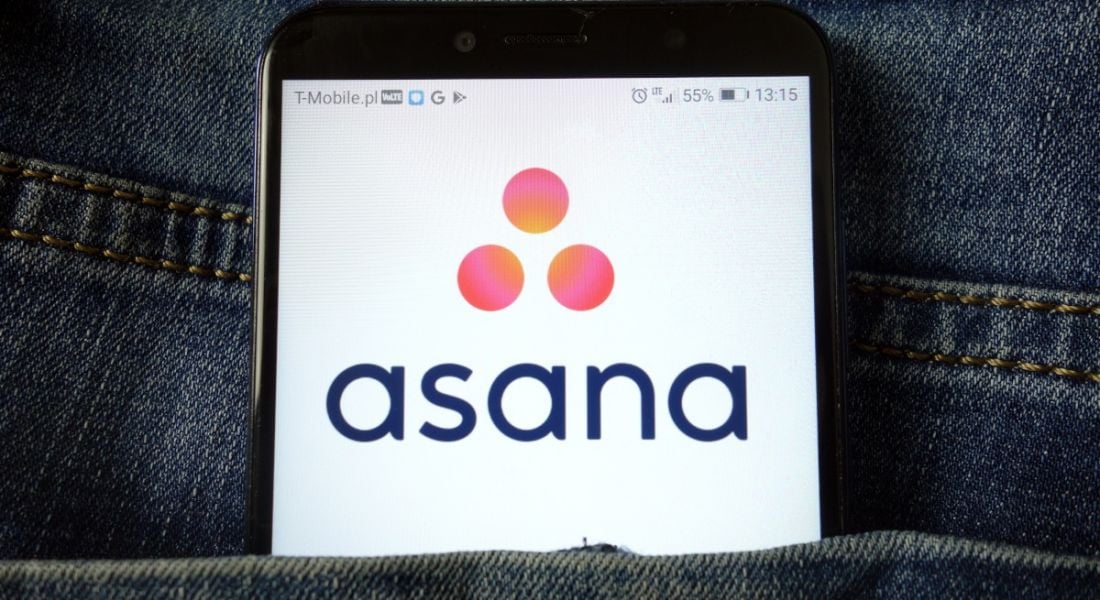Looking to use Asana while your team is working remotely? Here are some tips and tricks to get the most out of the work management platform.
There are plenty of tech tools that teams have turned to in recent months to help staff keep in touch while working from home. We’ve already looked at some of these options in more depth on Siliconrepublic.com, including Zoom, Google Meet and OneDrive.
But what about project management tools? Asana is one option that could help dispersed teams communicate and collaborate. The company provides work management and productivity software to help monitor workloads, goals, timelines and more, with online project spaces that teams can use track and update information in real time.
Paige Costello, Asana’s core product lead, said that the platform aims to help teams coordinate who is doing what and when it is going to be done.
“With Asana, you don’t have to navigate outdated docs and disparate messages to plan and execute your work,” she told Siliconrepublic.com. “Instead, you can manage and monitor all projects and tasks in one place. The tool integrates with the rest of your content and communication tools, so nothing slips through the cracks.”
What new Asana users should know
Through Asana’s platform, users can highlight who’s accountable for different projects or tasks and give everyone visibility on how work is progressing towards different goals.
Companies can create an Asana domain for their organisation, and then invite team members to join and collaborate in different team groupings. Users can set up a project, which is how you organise and plan tasks related to a specific initiative or piece of work, with a list, board, calendar or timeline.
Users can then create tasks, which are actionable steps or to-dos, setting due dates, attaching files and comments, and adding other team members as collaborators. Each user has a place for all of the tasks assigned to them, which allows them to set priorities, organise their work and keep a personal list.
Projects can then be organised by grouping tasks in different ways, and teams can figure out layouts and additional features that work for them.
According to Costello, a good way to onboard employees is by holding a meeting where everyone can get familiar with Asana’s features, and capture agendas, notes and next steps in a project. After the meeting, everyone can refer back to what was decided and the progress of the action items, with clear owners and due dates.
“Once everyone is set up, create a pilot project to work on together and begin to get a sense of how Asana works. You can collect feedback along the way to see how your team is working with the tool, and what new processes can be put in place.”
The company’s website features tips and updates on the best ways to navigate the software.
Tips and tricks
According to Costello, there are some tricks to using Asana that users can take advantage of once they’ve covered the basics.
This includes documenting working processes through custom Asana templates, which any team member can use to create a project. Templates cover business areas such as marketing, operations, design and HR.
Another trick she recommended is using multi-assign to pull a number of colleagues for help on a task without the need to duplicate tasks for each person. To do this, users create the task or subtask, fill out the description, due dates and attachments, then click on ‘assign duplicate tasks’ from the assign menu.
To organise projects by type or keep your sidebar organised, Asana users can colour-code everything to help teammates easily scan information by glancing at the colour. Users can also take advantage of start dates to show the duration of a task.
“Deadlines tell you when work is due, but all too often we wait until the last minute or let it fall off the radar if we have too much lead time,” Costello said. “Instead, you can use start dates to help you pace your work and ensure project plans give teammates enough time to complete their work.”
What makes Asana different to other tools?
There are plenty of other project management tools out there, including Trello, Basecamp, Teamwork and more. Costello said the advantage of Asana is that it can scale easily and provide a “living system” for workflows.
“It is built on a flexible data model, the work graph, which connects the dots between structured and unstructured data about the people, work and goals in your organisation. This means that work can be managed and monitored in the way which works best for each team and is always up to date.”
An Asana project space. Image: Asana
Asana offers a free service that allows users to create unlimited projects and tasks with up to 15 teammates, using all of the platform’s basic features.
The company also offers a premium subscription, Asana Premium, which provides customers with access to more advanced features and analytics.
“For example, Asana Premium helps teams spend more time on the work that matters most by automating regular workflows,” Costello said. “You can set up rules to automate manual processes like assigning tasks, updating fields and more. Custom and Asana-created templates are also available, offering pre-made templates to quickly add new workflows to Asana, based on our best practices.”
Beyond its premium subscription, Asana offers business and enterprise packages, which enable organisations to work across different initiatives and align on processes and goals, with more advanced security features. These versions of Asana can be integrated with key business applications such as Salesforce, Tableau, PowerBI and Adobe.
Working across remote teams
Now that many people are continuing to work from home due to the Covid-19 pandemic, demand for remote tools such as Asana is increasing. Has the company made any changes as a result?
“Distributed and remote work has become the norm for many of us over the last few months,” Costello said.
“To help teams navigate the future of work – whether that is a remote or distributed team – we have introduced new features and integrations to help ease companies into remote working. For example, we launched a ‘do not disturb’ feature to help employees take back control over their notifications and their time, allowing them to focus on the work at hand.”
The company also introduced a new integration with Microsoft Teams that adds to its existing integration stack, to keep teams connected without the need to switch between apps.
“Since shifting to working from home, we have strived to keep teams aligned no matter where in the world they are based,” Costello said.




